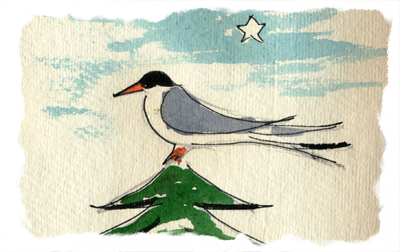
He’s Making a List. He’s Checking it Twice.
An excellent article in The Economist in November was singing the praises of Einstein’s theories. The writer noted that the effects Einstein predicted are real and have practical use. GPS satellites make relativistic adjustments to the “positional data streamed to smartphone users”.
It is a strange model and of course an incorrect one. GPS satellites do not look down from the sky, see where everyone is and then provide a torrent of information to keep users up to date. Much to the amazement of many working for Google I suspect, the GPS system has no knowledge of its users or where they are. And yet we live in an age where surveillance is taken for granted and the great enabling force in the universe is information.
Harrison’s Pips
What if this obsession had set in centuries ago? Harrison would have won the Longitude Prize, not with a clock, but the invention of the BBC World Service and the time signal pips. It solves the problem: “the time at the Greenwich Meridian now is…”. Marconi would then have invented the jammer, forcing navigators to seek more resilient longitude solutions.
Life’s a Treasure Hunt
This surveillance and information hang-up has been dominating thinking for years. Real solutions come from “HQ”, the surveillance hub, the information centre. At the centre of every system are the all-seeing eyes of the men whizzing around inside the observation dome of the village in The Prisoner or Anneka Rice in her Treasure Hunt helicopter.
Follow A UAV
But it is not new. The wise men of We Three Kings at least had the sense to use the Christmas star to keep them heading westward. (Good celestial navigation.) The travellers of The First Noel had to cope with a moving target which skipped over the Bethlehem roof tops like the follow-along bouncy ball across a page of lyrics. This star was almost certainly a UAV operated from Magi HQ, the camel train (or maybe camel platoon as our driverless vehicle fans would call it) having been fitted with GPS and GSM.
The Lost Art of Autonomy
All of this does not bode well for those planning truly autonomous systems. For the past half century we have been inventing ways of removing independence, be it on the battle field or in the corporate world. So many systems are built around the spider’s web of surveillance information systems it will be difficult to turn back the clock. The two approaches do not mix well. The difficulties lie not in the autonomy but the clash of approaches; the driverless vehicle surrounded by law-abiding drivers in the Wandsworth one-way system; the lone UAV in controlled airspace.
Navigation: An Autonomous Art
Which brings us back to the quaint view of GPS. The smartest thing a smartphone does is calculate where it is based solely on weak signals from space. Everything else it does simply involves passing on information. So the resurgence of interest in clever sensors and measurement is welcome. There is no doubt that Quantum Technologies will have a part to play with this autonomy, be it autonomous machines or autonomous people.
Checking it Twice
But information does have its place. As I write, an all-knowing man in a red suit is mining the big data set of human behaviour of the past 365 days to work out who has been naughty and who has been nice. That’s the easy part. Now how is he going to find them? I cannot believe he has a high-integrity data-link to elf HQ where a constellation of earth observation satellites follows his every move. Mind you, the autonomous solution involving a reindeer with a very bright nose sounds somewhat far-fetched.
December 27, 2015 at 1:29 am
I’ve onlty ever heard one correct description of GPS on TV, that was by Sky at NIght’s Dr Maggie Aderin-Pocock.
Tangentially, (and without checking it once) NORAD started by a wrong number – http://news.sky.com/story/1612031/tim-peake-dials-wrong-number-from-space
Know who else made a wrong number recently? – http://news.sky.com/story/1612031/tim-peake-dials-wrong-number-from-space
HNY, Roger
LikeLike